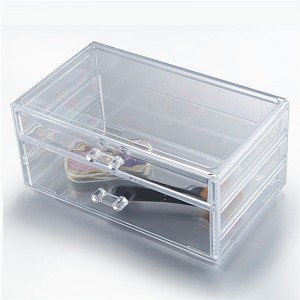নভে. . 09, 2024 22:12 Back to list
Understanding Average Costs for Shop Fitting and Design Services Explained
Average Shop Fitting Costs A Comprehensive Guide
When it comes to starting a retail business, one of the most critical aspects to consider is the shop fitting costs. These costs refer to the expenses associated with designing and equipping a retail space to make it both functional and appealing to customers. Understanding these costs is essential for effective budgeting and financial planning, especially for new business owners or those looking to renovate an existing space.
Understanding Shop Fitting
Shop fitting encompasses a variety of tasks, including the design, layout, and installation of fixtures, furniture, and fittings that enhance a retail environment. This can range from shelves, cabinets, and display units to lighting and signage. The primary aim is to create a shopping experience that attracts customers and drives sales. The costs associated with shop fitting can vary widely based on multiple factors.
Factors Influencing Shop Fitting Costs
1. Size of the Retail Space Larger shops generally require more materials and labor, leading to higher overall costs. Conversely, smaller spaces, while often less expensive, still have essential fitting needs that must be met.
2. Quality of Materials The choice of materials used for fittings affects the total cost significantly. High-quality, durable materials may come at a premium but can save money in the long run due to durability and lower maintenance costs.
3. Design Complexity A simple, minimalist design will typically be less costly than a complex, bespoke layout that requires custom fittings. The more intricate the design, the more careful planning and labor will be needed, increasing overall expenses.
4. Location The geographical location of the business can impact labor costs and the availability of materials. Urban areas usually feature higher wages and may present challenges in sourcing materials.
5. Labor Costs This can include not only the cost of hiring skilled professionals but also additional expenses such as permits or inspections, depending on local regulations.
6. Installation The complexity of the installation process can add to labor costs. Some fittings may require specialized skills, which can drive up the cost of labor.
Average Shop Fitting Costs
average shop fitting costs

While costs can significantly vary, on average, shop fitting expenses can range from $800 to $2,500 per square meter. For a small retail space of around 100 square meters, this could mean an investment of between $80,000 and $250,000. Here’s a rough breakdown of potential costs
- Basic Fittings For a straightforward, functional design, basic fittings can cost around $800 to $1,200 per square meter. This includes simple shelving, counters, and basic lighting. - Mid-Range Fittings If you wish to create a more sophisticated shopping environment with additional decorative elements, expect costs in the range of $1,200 to $1,800 per square meter.
- High-End Custom Fittings For a fully customized design using premium materials, the costs can soar to $1,800 to $2,500 per square meter, particularly for high-end retail spaces.
Budgeting for Shop Fitting
To effectively budget for shop fitting, business owners should
1. Conduct Market Research Understand the average costs in the area for comparable businesses and get quotes from various suppliers and contractors.
2. Create a Detailed Plan Clearly outline your visions for the space, considering both functionality and aesthetic appeal. This helps mitigate cost overruns.
3. Prioritize Investments Determine which aspects of the shop are most important to your brand and customer experience and allocate funds accordingly.
4. Allocate for Contingencies Always set aside a portion of your budget for unforeseen expenses that may arise during the fitting process.
Conclusion
Investing in shop fitting is a significant commitment that can greatly impact the success of a retail venture. By understanding average costs and the factors that influence them, business owners can make informed decisions and create an appealing shopping environment that attracts and retains customers. Proper planning and budgeting can lead to a successful shop fitting project, ultimately driving sales and fostering a thriving business.
-
The Benefits of Electronic Shelf Labels for Modern Stores
NewsJul.01,2025
-
Space-Saving Retail Store Furniture Designs for Small Shops
NewsJul.01,2025
-
Slatwall vs. Gridwall: Which Store Fixture is Right for Your Business?
NewsJul.01,2025
-
Shop Fittings: Essential Elements for a Functional Retail Space
NewsJul.01,2025
-
How to Design a Minimalist Cosmetic Shop Display
NewsJul.01,2025
-
Creative Clothes Shop Display Ideas to Attract More Customers
NewsJul.01,2025


















































































































